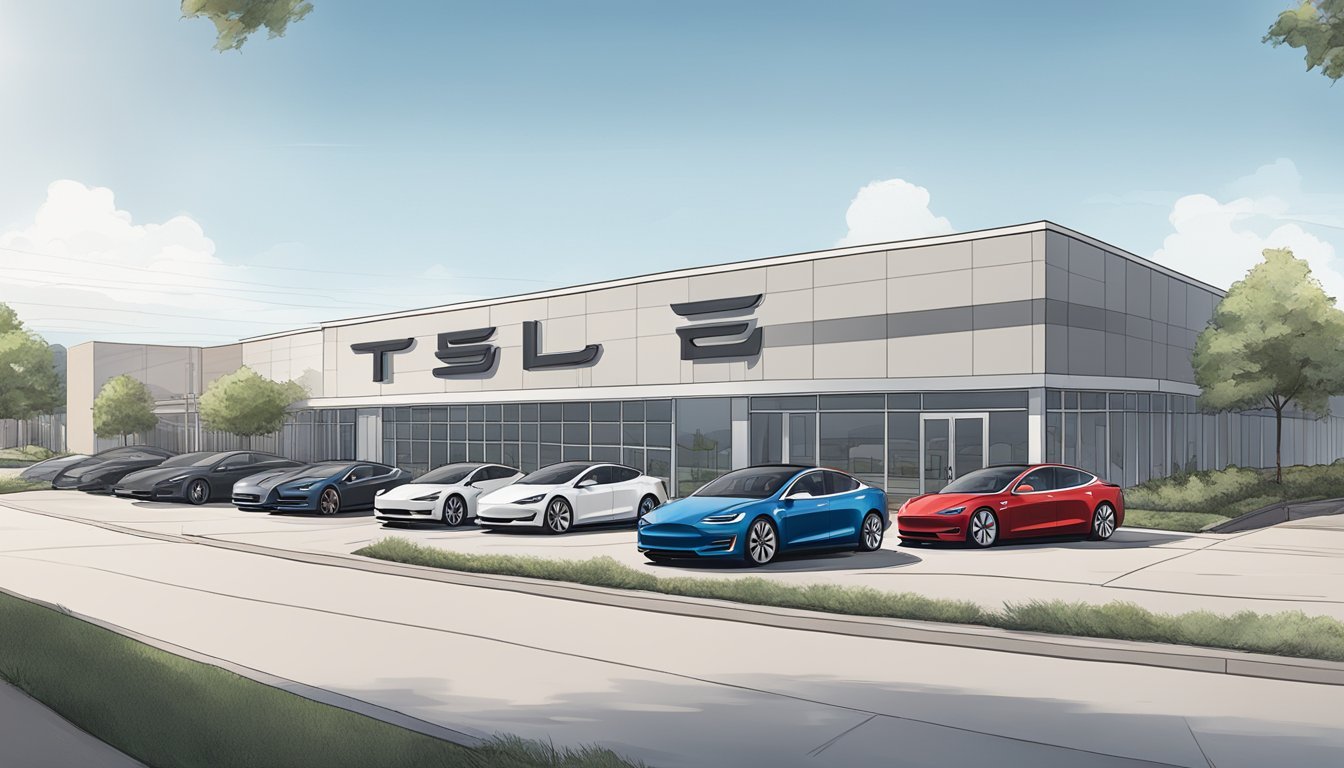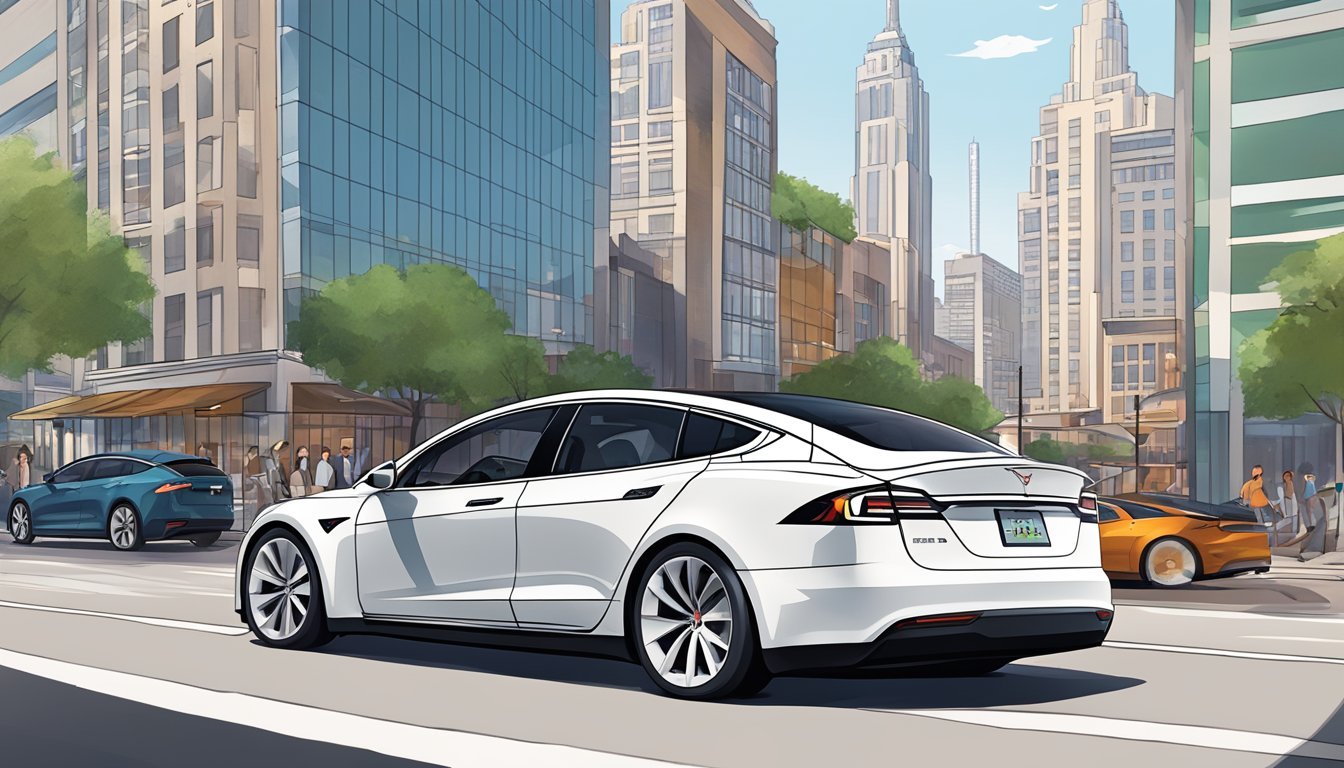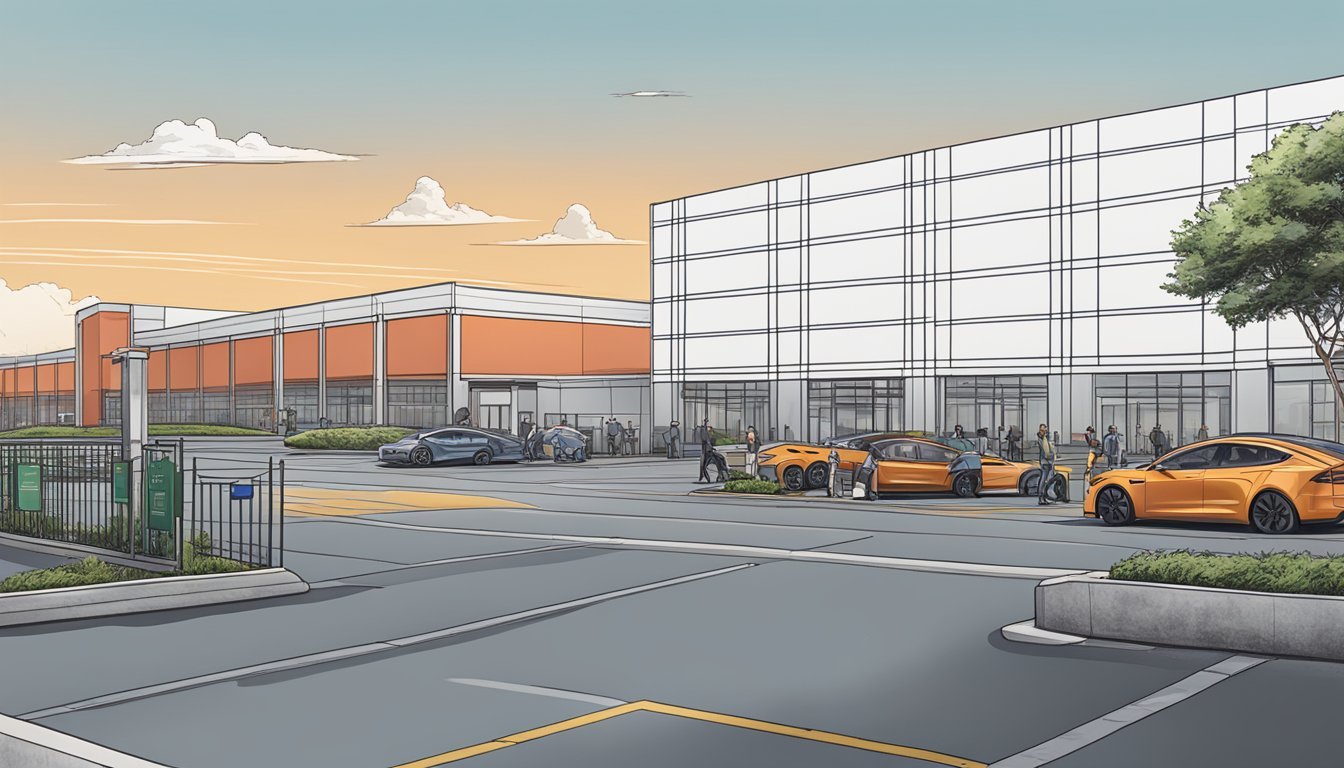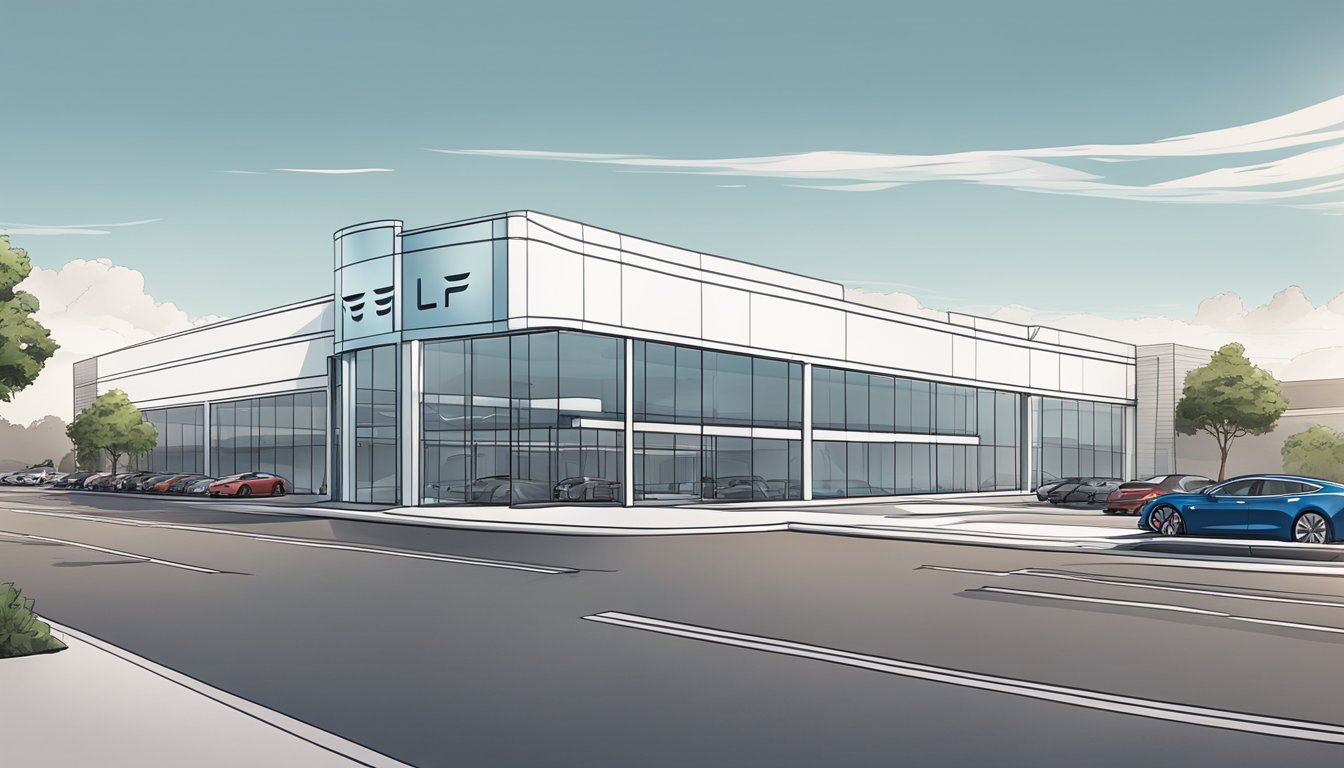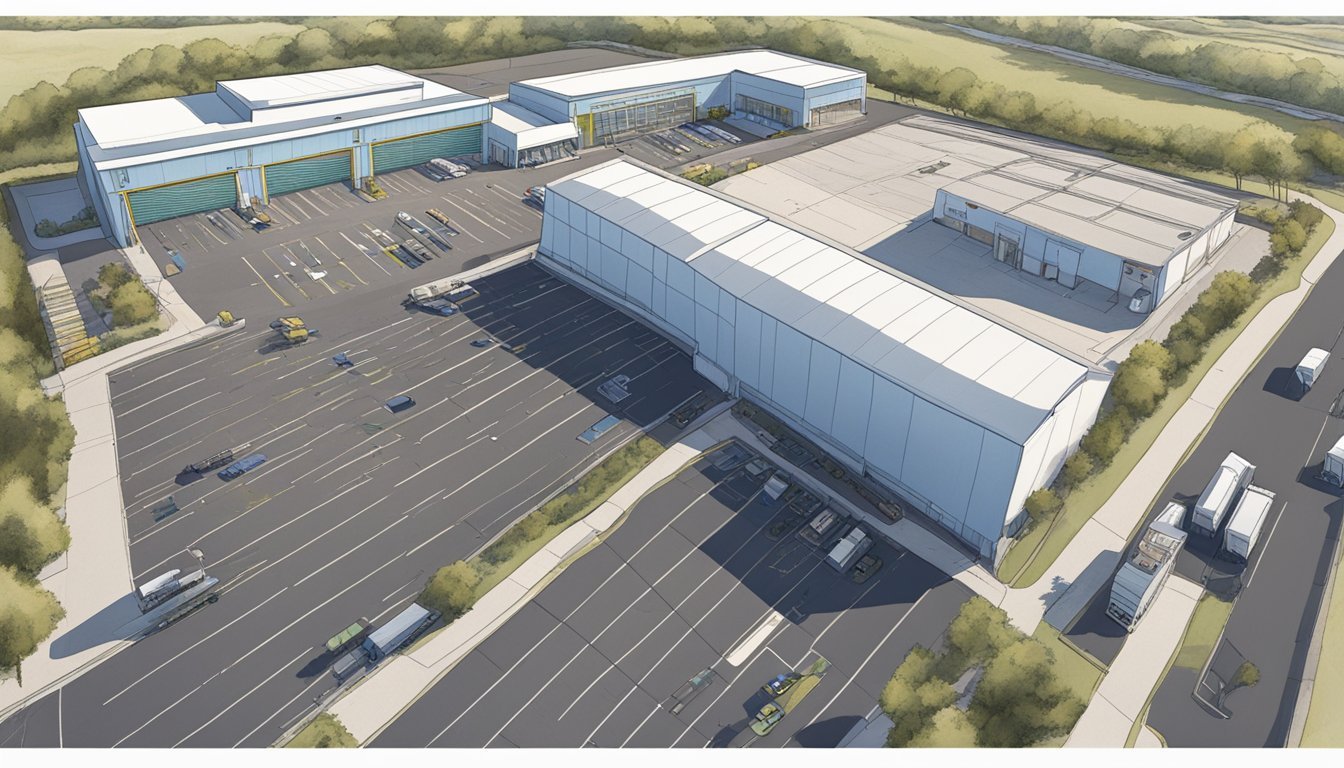Tesla Austin Closing: Massive Layoffs Shock Workforce and Raise Future Concerns!
Tesla's recent announcement of significant layoffs has sent shockwaves through its workforce, particularly in Austin, Texas. The electric vehicle giant is cutting approximately 2,688 jobs at its Austin headquarters and Gigafactory, part of a broader restructuring effort that affects over 10% of its global employees.
The job cuts in Austin represent a substantial portion of Tesla's local workforce, raising questions about the company's future plans for its Texas operations. This move comes as a surprise to many, especially given the recent expansion and investments made in the Austin Gigafactory, which produces the Cybertruck and other Tesla vehicles.
Employees reported being blindsided by the layoffs, with some finding out through company memos or direct notifications. The impact of these job losses extends beyond the individuals affected, potentially influencing the local economy and Tesla's production capabilities in the region. As the situation develops, stakeholders are closely watching for further updates on Tesla's strategy and the long-term implications for its Austin presence.
Overview of Tesla's Presence in Austin
Tesla's expansion into Austin marks a significant milestone for both the electric vehicle maker and the city. The company's presence has brought major economic and technological impacts to the region.
Austin Factory Establishment
Tesla announced its move to Austin in 2020, selecting the Texas capital for its new Gigafactory. The facility, known as Giga Texas, spans nearly 2,100 acres in eastern Travis County. Construction began swiftly, with the factory becoming operational in 2022.
Giga Texas serves as a manufacturing hub for Tesla's Model Y and Cybertruck. The facility also houses Tesla's corporate headquarters, which relocated from California. This move solidified Austin's status as a major tech hub, attracting talent and investment from across the globe.
Significance of Gigafactory Texas
Giga Texas has become a cornerstone of Austin's economy. The factory has created approximately 15,000 jobs, making Tesla the largest private employer in Austin. This influx of employment has had ripple effects throughout the region.
The economic impact extends beyond direct employment. Tesla's presence has spurred the growth of a supplier ecosystem in the Austin metro area. Many electric vehicle suppliers have established operations nearby, creating additional jobs and economic activity.
Tesla's investment in Austin has brought an estimated $2 billion in economic activity to the region. The company has also initiated community projects, including sustainability programs and educational initiatives.
Impact on Tesla's Workforce
Tesla's Austin facility faces significant workforce reductions, affecting thousands of employees. The layoffs are part of a broader global downsizing strategy implemented by the company.
Employment Update
Tesla plans to lay off 2,688 employees at its Austin facility starting June 14, 2024. This represents nearly 12% of the company's Texas workforce. The move comes after Tesla reported a drop in first-quarter sales, prompting a reevaluation of staffing needs.
The layoffs are part of a larger initiative to cut 10% of Tesla's global workforce. CEO Elon Musk detailed the plans in a memo sent to employees, catching many off guard. Some affected workers described the situation as "heartbreaking."
Worker Adjustment and Retraining Notification
Tesla filed a regulatory notice under the Worker Adjustment and Retraining Notification (WARN) Act with the Texas Workforce Commission. The WARN Act requires companies with more than 100 employees to provide 60 days' notice before large-scale layoffs.
The notification serves as an official alert to both employees and state agencies. It allows workers time to seek new employment opportunities and access retraining resources. The Texas Workforce Commission can use this information to coordinate support services for displaced workers.
Tesla's compliance with the WARN Act demonstrates adherence to labor regulations during this challenging period for the company and its employees.
Regulatory Compliance
Tesla faces significant regulatory hurdles as it navigates the closure of its Austin factory. The company must adhere to federal and state laws governing mass layoffs and worker notifications.
WARN Act Implications
The Worker Adjustment and Retraining Notification (WARN) Act requires employers with 100 or more employees to provide 60 days' advance notice of plant closings and mass layoffs. Tesla's Austin factory closure likely triggers WARN Act provisions due to its size and workforce. The company must issue written notices to affected employees, their representatives, and local government officials.
Failure to comply with WARN Act requirements can result in financial penalties and potential lawsuits. Tesla may be liable for back pay and benefits for the period of violation up to 60 days. The Act allows for exceptions in cases of unforeseen business circumstances or natural disasters, but the burden of proof lies with the employer.
Texas Workforce Commission Notification
Tesla must notify the Texas Workforce Commission (TWC) about the impending closure and layoffs. The TWC requires employers to file a WARN notice when laying off 50 or more workers. This notification helps the state agency coordinate rapid response services for affected employees.
The TWC uses this information to:
Assist workers in finding new employment
Provide information on unemployment benefits
Offer job training and career counseling services
Tesla's compliance with TWC notification requirements is crucial for accessing state resources and support for its displaced workforce. Timely and accurate reporting can help mitigate the economic impact on both employees and the local community.
Reasons for the Closure
Tesla's decision to close its Austin factory stems from economic pressures and efforts to optimize operations. The company faces challenges that have led to this significant move.
Economic Factors
Tesla's closure of its Austin facility is partly driven by market conditions. The electric vehicle industry has experienced slowing growth, impacting Tesla's sales projections. This slowdown has forced the company to reassess its production capacity and workforce needs.
Tesla's stock price has declined by about one-third this year, reflecting investor concerns. The company is under pressure to reduce costs and improve profitability. Closing the Austin factory allows Tesla to consolidate operations and cut expenses.
The global economic climate has also played a role. Supply chain disruptions and rising material costs have squeezed profit margins. By shuttering the Austin plant, Tesla aims to better align its production with current demand and economic realities.
Operational Efficiency
Tesla is streamlining its manufacturing processes to boost efficiency. The Austin closure is part of a broader strategy to optimize production across all facilities. This move allows the company to concentrate resources on its most productive plants.
The Austin factory has faced delays in key projects, including 4680 battery cell production and the cathode factory. These setbacks have likely influenced the decision to close the facility. By shifting operations elsewhere, Tesla can potentially accelerate progress on these critical initiatives.
The company is also implementing workforce reductions. Nearly 2,700 workers at the Austin factory will be laid off. This restructuring aims to create a leaner organization and reduce labor costs. Tesla is likely to redistribute key personnel to other locations to maintain essential operations.
Repercussions for the Local Economy
Tesla's potential closure in Austin would have significant implications for the region's economic landscape. The company's presence has been a major driver of job creation and economic activity in Travis County.
Austin's Economic Forecast
The closure of Tesla's Gigafactory in Austin would likely lead to substantial job losses. Tesla has supported over 15,000 jobs in Travis County, either through direct employment or indirectly. This potential reduction in the workforce could ripple through the local economy, affecting suppliers, service providers, and other businesses that have benefited from Tesla's presence.
The economic impact extends beyond employment. Tesla has brought an estimated $2 billion in economic activity to the area since opening its Gigafactory. A closure would likely result in a significant decrease in local spending and tax revenue for Travis County and the city of Austin.
The real estate market may also feel the effects. Housing demand and property values in the vicinity of the Gigafactory could potentially decline if a large number of Tesla employees leave the area.
Response from Tesla's Management
Tesla's leadership addressed the recent developments at the Austin Gigafactory through official statements and employment updates. The company provided insights into the reasons behind the temporary pause in operations and layoffs.
Elon Musk's Statement
Elon Musk, CEO of Tesla, took to social media to address the situation at the Austin Gigafactory. He emphasized that the temporary pause in operations was a strategic decision to optimize production processes and improve efficiency.
Musk stated, "We're recalibrating our Austin facility to meet evolving market demands and enhance our manufacturing capabilities." He assured stakeholders that this move would ultimately strengthen Tesla's position in the electric vehicle market.
The CEO also addressed concerns about job losses, noting that the company was working on redeployment options for affected employees where possible.
Official Tesla Employment Update
Tesla's Human Resources department issued an official employment update regarding the Austin Gigafactory situation. The statement confirmed the layoff of approximately 2,600 employees at the facility.
The update outlined the reasons for the workforce reduction, citing a need to align production capacity with current market conditions. Tesla emphasized that the decision was not taken lightly and was necessary for the company's long-term sustainability.
The company announced plans to provide severance packages and career transition support for affected employees. Tesla also stated its commitment to rehiring when market conditions improve and production ramps up again.
Future of Tesla's Operations
Tesla's operations in Austin face potential changes as the company reassesses its manufacturing strategies. Key developments center around Cybertruck production and shifts in operational focus.
Cybertruck Production Prospects
Tesla's Gigafactory Texas remains crucial for Cybertruck manufacturing. The facility is slated to begin production of the highly anticipated electric pickup truck in the near future. Despite some delays, Tesla aims to ramp up Cybertruck output at the Austin plant.
The company has invested heavily in specialized equipment and production lines for the unique stainless steel body. Tesla expects the Cybertruck to be a significant revenue driver once full-scale production begins.
Strategic Shifts
Tesla is exploring options to optimize its manufacturing footprint. The company may relocate some production capacity from California to Texas, consolidating operations at Gigafactory Austin. This move could streamline logistics and reduce costs.
Tesla is also expanding the Austin facility's size, doubling its footprint to accommodate future growth. The enlarged plant will house additional production lines for upcoming vehicle models.
The company plans to introduce new, more affordable electric vehicles based on the Model 3 and Model Y platforms. Production of these vehicles is expected to start at Gigafactory Texas in early 2025.

